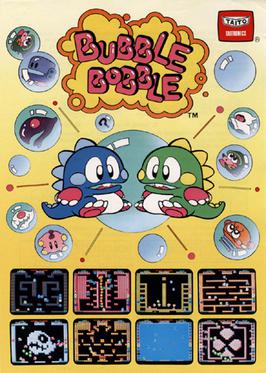
Bubble Bobble is a 1986 platform game developed and published by Taito for arcades. It was distributed in the United States by Romstar, and in Europe by Electrocoin. Players control Bub and Bob, two dragons that set out to save their girlfriends from a world known as the Cave of Monsters. In each level, Bub and Bob must defeat each enemy present by trapping them in bubbles and popping, who turn into bonus items when they hit the ground. There are 100 levels total, each becoming progressively more difficult.

Roguelike is a style of role-playing game traditionally characterized by a dungeon crawl through procedurally generated levels, turn-based gameplay, grid-based movement, and permanent death of the player character. Most roguelikes are based on a high fantasy narrative, reflecting their influence from tabletop role-playing games such as Dungeons & Dragons.
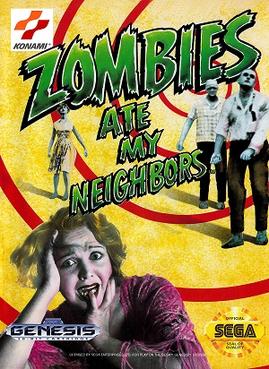
Zombies Ate My Neighbors is a run and gun video game developed by LucasArts and published by Konami for the Super NES and Sega Genesis consoles in 1993.
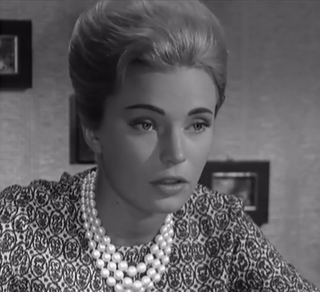
Margarete Robsahm is a Norwegian model, actress and director. She is the mother of director Thomas Robsahm and sister of the actor Fred Robsahm. To an international audience, she is best known for her role in Castle of Blood with Barbara Steele, but she has also starred in Norwegian movies, among these Line from 1961. The movie was based on a novel by Axel Jensen and caused a minor scandal in Norway at the time, as Robsahm was the first actress ever to expose her breasts in a Norwegian movie.

Fagernes Airport, Leirin is a general aviation airport in Fagernes, in the municipality of Nord-Aurdal, Innlandet county, Norway. It has been an airport for passenger flights, serving Fagernes and the surrounding valleys of Valdres, Hallingdal and Gudbrandsdal in Southern Norway, 190 kilometres (120 mi) from Oslo. Opened in 1987, it was owned and operated by state-owned Avinor. The airport is located 822 metres (2,697 ft) above sea level, and has a 2,049-metre (6,722 ft) runway. It did provide a regional service for the local population to Oslo, subsidized by the Ministry of Transport, as well as charter services during winter serving the nearby ski resorts. In 2014, the airport had 6,393 passengers. The driving time Fagernes–Oslo, around 2½ hours, has made flights to Oslo unattractive; most passengers used the Oslo route for transfers. It has also been used for other destinations. The road has also been improved compared to how it was in 1987.
A comfort object, more formally a transitional object or attachment object, is an item used to provide psychological comfort, especially in unusual or unique situations, or at bedtime for children. Among toddlers, a comfort object often takes the form of a blanket or a stuffed animal, doll or other toy, and may be referred to by a nickname such as blankie.
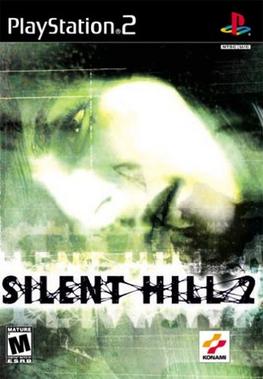
Silent Hill 2 is a 2001 survival horror game developed by Team Silent, a group in Konami Computer Entertainment Tokyo, and published by Konami. The game was released from September to November, originally for the PlayStation 2. The second installment in the Silent Hill series, Silent Hill 2 centers on James Sunderland, a widower who journeys to the town of Silent Hill after receiving a letter from his dead wife. An extended version containing a bonus scenario, Born from a Wish, and other additions was published for Xbox in December of the same year. In 2002, it was ported to Microsoft Windows and re-released for the PlayStation 2 as a Greatest Hits version, which includes all bonus content from the Xbox port. A remastered high-definition version was released for the PlayStation 3 and Xbox 360 in 2012 as part of the Silent Hill HD Collection.
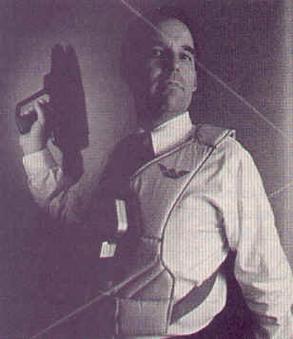
Worlds of Wonder (WoW) was an American toy company founded in 1985 by former Atari sales president Don Kingsborough, and former Atari employee Mark Robert Goldberg. Its founding was inspired by a prototype that became its launch product, Teddy Ruxpin. In 1986, it launched Lazer Tag and filed an IPO which Fortune magazine called "one of the year's most sought after stock sales". WoW partnered with the young Nintendo of America as retail sales distributor, crucial to the landmark launch and rise of the Nintendo Entertainment System from 1986 to 1987.

Skien Airport, Geiteryggen is a regional airport located at Geiteryggen, 5.5 kilometers (3.4 mi) southwest of the city center of Skien, Norway. Owned by Skien Municipality, it was last served by Widerøe with daily flights to Bergen. The runway is 1,416-by-30-meter and numbered 01–19. The airport had 33,080 passengers in 2014 and has Grenland and the southern part of Telemark as its catchment area.

Sparebanken Sør Arena is a football stadium located at Torsvika in Kristiansand, Norway. The all-seater has a capacity of 14,563 people, and serves as the home ground of Tippeligaen side IK Start. It was designed by Kjell Kosberg, and is architecturally similar to Aker Stadion. The venue has seen concerts by Elton John, Dolly Parton and A-ha, among others.. UEFA refers to the stadium as Kristiansand Arena.

Teddy Air AS was a regional airline, based at Skien Airport, Geiteryggen, in Norway. Operating between 1989 and 2004, the company operated Britten-Norman Islander, Embraer 110 and Saab 340 aircraft. The company started by providing a scheduled service between Skien and Oslo in 1990, followed by services to Stavanger in 1993 and Bergen in 1994. In 1996, it won a contract with the Ministry of Transport from Oslo to Fagernes. It was involved in intense competition with other regional airlines, notably Coast Air and Guard Air, following the deregulation of the aviation market. It also had a single international service to Gothenburg, and from 1999 it served Stord Airport, Sørstokken. From 1999, the company was transformed to a virtual airline, which wet leased aircraft from Golden Air. The company ceased operations in 2004.

Silent Hill: Shattered Memories is a 2009 survival horror game developed by Climax Studios and published by Konami Digital Entertainment. It was released in December for the Wii and ported to the PlayStation 2 and PlayStation Portable platforms in January 2010. In April 2014, it appeared on the PlayStation Network in Europe.

Silent Hill: Downpour is a 2012 survival horror game developed by Vatra Games and published by Konami. Downpour is set in the series' eponymous fictitious American town and centers on Murphy Pendleton, a prisoner who enters the town, periodically entering the otherworld, leading him to unlock repressed memories. The game uses a third-person view and can be played in 3D. It was released in March 2012.
Monster High is an American multimedia-supported fashion doll franchise created by toy designer Garrett Sander and launched by Mattel in 2010. The show is aimed at children ages 7-14, the franchise features characters inspired by monster movies, sci-fi horror, thriller fiction, folklore, myths and popular culture, centering around the adventures of the teenage children of monsters and other mythical creatures attending a high school of the same name.

Stacking is an adventure puzzle video game developed by Double Fine Productions and published by THQ in February 2011 for the Xbox 360 and PlayStation 3 video game consoles. A Windows version was released in March 2012, and OS X and Linux versions were released in May 2013. Like Double Fine's previous Costume Quest, it is a smaller title created during the development period of Brütal Legend.

Silent Hill: Book of Memories is a 2012 dungeon crawler video game developed by WayForward Technologies and published by Konami. Released for the PlayStation Vita, it is a spin-off of the Silent Hill video game series. It features a player-created protagonist who receives the titular book on their birthday, which contains their entire life story, and makes changes to it with unforeseen and often unfavorable consequences. Book of Memories features gameplay elements from role-playing games: as the player character traverses the dungeons and defeats monsters there, they gain experience points and thus improve their respective abilities. The character progresses from each themed level by collecting pieces of a puzzle and then solving the puzzle. Five endings are available based on the character's alignment; the sixth is a joke ending in the tradition of previous Silent Hill games.

The Sims FreePlay is a strategic life simulation game developed by EA Mobile and later with Firemonkeys Studios. It is a freemium version of The Sims for mobile devices; it was released for iOS on December 15, 2011, released for Android on February 15, 2012, released for BlackBerry 10 on July 31, 2013, and released for Windows Phone 8 on September 12, 2013.

Red Thread Games is a Norwegian video game developer based in Oslo. Their first release was Dreamfall Chapters, the episodic sequel to Dreamfall: The Longest Journey, released in five episodes between 2014 and 2016.
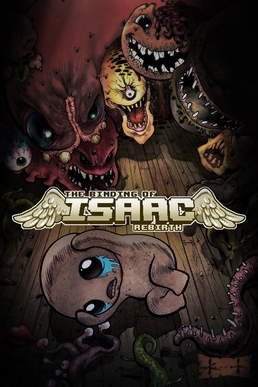
The Binding of Isaac: Rebirth is a roguelike indie game designed by Edmund McMillen and developed and published by Nicalis. Rebirth was released for Linux, Microsoft Windows, OS X, PlayStation 4 and PlayStation Vita in November 2014, for Xbox One, New Nintendo 3DS and Wii U in July 2015, for iOS in January 2017 and for Nintendo Switch in March 2017. The PlayStation 5 and Xbox Series X/S versions were released in November 2021.

Daylight is a survival horror video game developed by Zombie Studios and published by Atlus for Microsoft Windows and PlayStation 4. It was the first game to be powered by Unreal Engine 4.

















